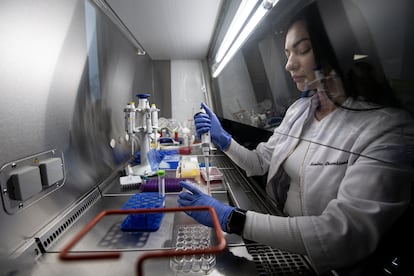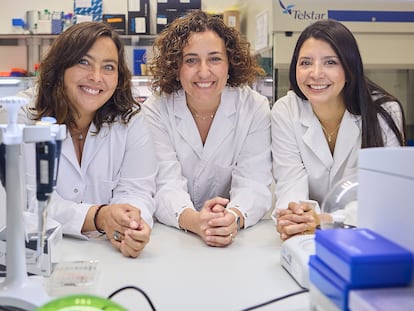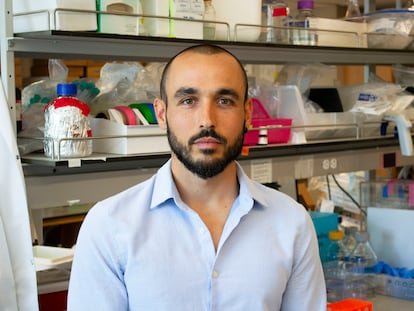Experimental blood test can detect tumors in asymptomatic people
A study published in ‘The Lancet’ supports the potential use of liquid biopsy as a future tool for early detection, but experts warn that the technique still needs refining to avoid false positives and overdiagnosis

When it comes to cancer, early detection is crucial. The sooner a tumor is found, the better the chances for successful treatments and outcomes. However, cancer doesn’t always present noticeable symptoms until it has progressed. Scientists are racing to develop tools for early diagnosis, and a liquid biopsy method now shows promise in detecting traces of tumors in blood and other body fluids, even in seemingly healthy individuals. This blood test helps monitor metastatic tumors and improve prognosis following specific cancer surgeries. A recent study published in The Lancet further supports the potential use of these techniques for early cancer detection in asymptomatic people. Still, experts caution that this tool still requires refinement to avoid false positives and overdiagnosis before it can be implemented as a population screening method.
Tumors often indicate their presence in the body by releasing tumor DNA, proteins and other molecules into the bloodstream. Liquid biopsies enable oncologists to analyze a blood sample for these biological traces, providing valuable insights about the disease in a minimally invasive manner. This includes detecting the tumor, monitoring treatment response and identifying resistance.
“Liquid biopsies have many applications,” said Ana Vivancos, head of cancer genomics at Spain’s Vall d’Hebron Institute of Oncology (VHIO). “In metastasis, we track mutations and assess therapy response by analyzing tumor DNA in the blood. This provides valuable insights into the patient’s condition. Additionally, we’re exploring its use in surgical settings. For example, if colon cancer patients are operated on and a blood sample taken after one or two weeks reveals tumor DNA, it signifies no cure. Conversely, if chemotherapy is administered post-surgery and tumor DNA disappears, it indicates successful treatment. If tumor DNA is found later, it suggests a potential relapse. Lastly, the most challenging application is early cancer detection in asymptomatic individuals.”
The new study shows the potential of liquid biopsy for early cancer detection in asymptomatic individuals. The study involved over 6,600 people, both with and without cancer risk factors, who underwent a blood test. The test identified signs of cancer in 92 people; 35 were diagnosed with a tumor but the other 57 were false positives — they did not in fact have any signs of cancer. In all, 121 people were diagnosed with cancer throughout the year-long study. Besides the 35 detected through liquid biopsy, another 86 participants who tested negative were ultimately diagnosed with cancer using other techniques — meaning the liquid biopsy produced a troubling number of false negatives.
The trial utilized a test that analyzes methylation patterns. These patterns act as unique markers within tumor DNA, not only indicating the presence of the disease but also pinpointing its origin. The trial successfully identified various types of cancer — including those that lack screening tests — and even detected early-stage cancers, such as bile duct, small intestine, pancreas, and spindle cell neoplasms that could be treated with a surgical resection. Physical examinations or routine screenings would unlikely have identified these lethal malignancies. Notably, almost half of the positive results from the test were early-stage (I and II) tumors; stage IV represents the most advanced and severe stage of the disease.
Despite the study’s false positives and negatives, the scientists concluded that it demonstrates “the clinical viability” of these tests, and acknowledged that more studies are needed to investigate “the safety, usefulness and clinical effectiveness [of these tests] as a cancer detection strategy.”
The study further supports existing scientific literature about liquid biopsy techniques. A 2018 study conducted by scientists from Johns Hopkins University and published in Science validated the potential of CancerSeek, another test capable of detecting eight types of tumors. Furthermore, a 2020 study in the same journal demonstrated that CancerSeek can be used to detect tumors in asymptomatic individuals. After monitoring 9,900 women, these researchers discovered cancer in 26 people, offering the potential for curative treatments in some instances.
More work ahead
“The Lancet study demonstrates a test that can detect cancer in a significant number of cases, but there is still much more work ahead,” said Vivancos, who was not involved in the study. Similarly, Clara Montagut, a practicing oncologist and researcher at the Hospital del Mar in Barcelona, says that while the new study is a step in the right direction, more research is necessary. She noted that the results were not exceptional, but rather comparable to current breast and colon screening methods. The advantage is that a blood test is simpler, which may lead to higher adherence.
Experts emphasize the need for refining the technique so it can potentially become a long-term population screening tool. “It’s a step forward, but not the definitive one,” said César Serrano, a Spanish Society of Medical Oncology board member. Serrano, who is also an oncologist at Vall d’Hebron, noted the technical and biological constraints of liquid biopsies, including the fact that not all tumors release DNA into the bloodstream. “Certain tumors, like those in the lung, breast, and colon, release a significant amount of tumor DNA into the blood. However, thyroid tumors and sarcomas tend to release less DNA. Additionally, even within the same type of tumor, some may release DNA while others may not.”
One challenge with liquid blood biopsy is that tumor DNA is typically easier to detect in more advanced stages of the disease. Vivancos explains that in the earlier stages, it becomes more complex. “Patients in stages I and II are often overlooked because their cancers release less DNA into the blood. The more advanced the cancer is, the more DNA it releases. However, some cancers with a favorable prognosis, like sarcoma, release minimal DNA. On the other hand, aggressive cancers like pancreatic cancer also release limited amounts. We still don’t fully comprehend how tumors release DNA into the blood, and it remains an important area of research.”
Improving the technique is necessary to prevent false positives and missed cases. “We must be very careful and ensure that cancer isn’t mistakenly detected,” said Montagut. A false positive means subjecting a healthy person to unnecessary medical tests and a great deal of stress“We’re not there yet,” said Vivanco. “The technique is an improvement, but many cases of cancer are missed. The false negatives are even more problematic than the stress-causing false positives.”
A promising technique
Experts also stress the need to assess the risk of overdiagnosis — detecting lesions that may not progress to cancer or will resolve on their own. Additionally, Serrano highlights the importance of population screening demonstrating clinical validity (detecting biomarkers in the blood) and clinical usefulness (enhancing patient survival).
The potential of liquid biopsy is tremendous, experts say, and can be used with blood and other body fluids. Recent research is exploring its application in breast milk and cerebrospinal fluid for detecting brain tumors. Vivanco says she’s optimistic but also realistic. “I think it will eventually be used in population screening, but first the technique must be improved.” Currently, it serves to monitor disease in real time and aims to guide certain treatments in the near future. “It’s very promising, but just research for now,” said Serrano.
Sign up for our weekly newsletter to get more English-language news coverage from EL PAÍS USA Edition
Tu suscripción se está usando en otro dispositivo
¿Quieres añadir otro usuario a tu suscripción?
Si continúas leyendo en este dispositivo, no se podrá leer en el otro.
FlechaTu suscripción se está usando en otro dispositivo y solo puedes acceder a EL PAÍS desde un dispositivo a la vez.
Si quieres compartir tu cuenta, cambia tu suscripción a la modalidad Premium, así podrás añadir otro usuario. Cada uno accederá con su propia cuenta de email, lo que os permitirá personalizar vuestra experiencia en EL PAÍS.
¿Tienes una suscripción de empresa? Accede aquí para contratar más cuentas.
En el caso de no saber quién está usando tu cuenta, te recomendamos cambiar tu contraseña aquí.
Si decides continuar compartiendo tu cuenta, este mensaje se mostrará en tu dispositivo y en el de la otra persona que está usando tu cuenta de forma indefinida, afectando a tu experiencia de lectura. Puedes consultar aquí los términos y condiciones de la suscripción digital.
More information
Archived In
Últimas noticias
Welcome to the post-religion era: The idea of Christianity as the absolute truth has become obsolete
‘I thought you would like it’: The risky sexual practice popularized by TV shows and TikTok
The digitalization of tourism: ‘They promise experiences and gave us the worst possible one’
Mexican peso defies uncertainty with forecasts of a new period of stability in 2026
Most viewed
- Sinaloa Cartel war is taking its toll on Los Chapitos
- Reinhard Genzel, Nobel laureate in physics: ‘One-minute videos will never give you the truth’
- Oona Chaplin: ‘I told James Cameron that I was living in a treehouse and starting a permaculture project with a friend’
- Why the price of coffee has skyrocketed: from Brazilian plantations to specialty coffee houses
- Silver prices are going crazy: This is what’s fueling the rally











































